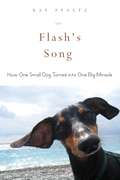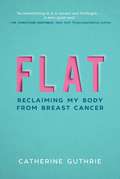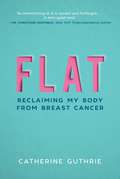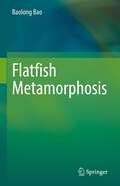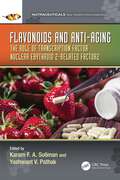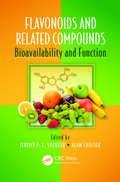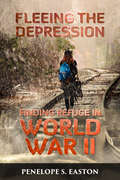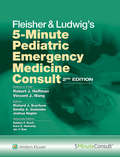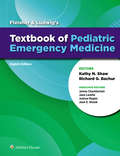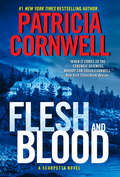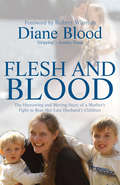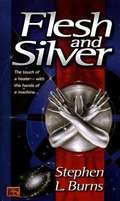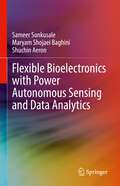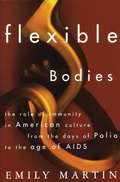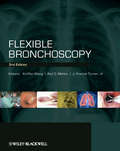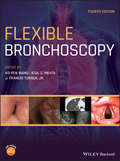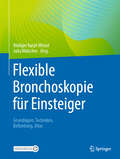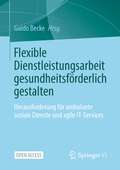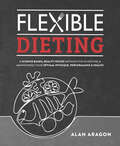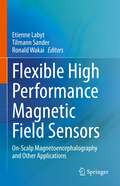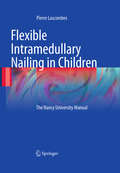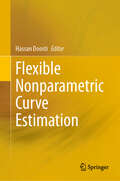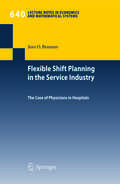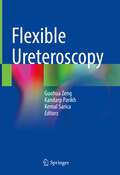- Table View
- List View
Flash's Song: How One Small Dog Turned into One Big Miracle
by Kay PfaltzFlash’s Song is the true account of how one person discovered the secret of miracles. Freelance writer Kay Pfaltz was living a quiet, simple life with her three beloved dogs when suddenly her life turned upside down. Coming to terms with a failed relationship, she must now take her ailing dachshund, Flash, in for back surgery. But when the vet tells Kay that Flash’s problem is not a disc but in fact a tumor growing on his spine and Flash has, at most, three weeks to live, Kay is devastated. Here begins a journey of self-discovery and recovery that will open Kay’s heart to the greatest miracle of all. Flash’s Song tells the story of amazing canine courage and remission against all odds. It is a ballad of love and redemption and a moving account of how Flash’s three-week prognosis became five-and-a-half miraculous months of learning, loving, and finally accepting. Written in luminous prose, accompanied by poignant photos, and filled with keen insight into love, faith, and the power of forgiveness, Flash’s Song is not only a heartwarming ode to a little dog, but also a tribute to life and an invitation to cherish every moment of it.
Flat: Reclaiming My Body from Breast Cancer
by Catherine Guthrie<p>A feminist breast cancer memoir of medical trauma, love, and how she found the strength to listen to her body. <p>As a young, queer woman, Catherine Guthrie had worked hard to feel at home in her body. However, after years writing about women’s health and breast cancer, Guthrie is thrust into the role of the patient after a devastating diagnosis at age thirty-eight. At least, she thinks, I know what I'm up against. <p>She was wrong. In one horrifying moment after another, everything that could go wrong does—the surgeon gives her a double mastectomy but misses the cancerous lump, one of the most effective drug treatments fails, and a doctor's error may have unleashed millions of breast cancer cells into her body. <p>Flat is Guthrie’s story of how two bouts of breast cancer shook her faith in her body, her relationship, and medicine. Along the way, she challenges the view that breasts are essential to femininity and paramount to a woman’s happiness. Ultimately, she traces an intimate portrayal of how cancer reshapes her relationship with Mary, her partner, revealing—in the midst of crisis—a love story. <p>Filled with candor, vulnerability, and resilience, Guthrie upends the “pink ribbon” narrative and offers a unique perspective on womanhood, what it means to be “whole,” and the importance of women advocating for their desires. Flat is a story about how she found the strength to forge an unconventional path—one of listening to her body—that she’d been on all along.</p>
Flat: Reclaiming My Body from Breast Cancer
by Catherine GuthrieA feminist breast cancer memoir of medical trauma, love, and how she found the strength to listen to her body. As a young, queer woman, Catherine Guthrie had worked hard to feel at home in her body. However, after years writing about women’s health and breast cancer, Guthrie is thrust into the role of the patient after a devastating diagnosis at age thirty-eight. At least, she thinks, I know what I'm up against. She was wrong. In one horrifying moment after another, everything that could go wrong does—the surgeon gives her a double mastectomy but misses the cancerous lump, one of the most effective drug treatments fails, and a doctor's error may have unleashed millions of breast cancer cells into her body. Flat is Guthrie’s story of how two bouts of breast cancer shook her faith in her body, her relationship, and medicine. Along the way, she challenges the view that breasts are essential to femininity and paramount to a woman’s happiness. Ultimately, she traces an intimate portrayal of how cancer reshapes her relationship with Mary, her partner, revealing—in the midst of crisis—a love story. Filled with candor, vulnerability, and resilience, Guthrie upends the “pink ribbon” narrative and offers a unique perspective on womanhood, what it means to be “whole,” and the importance of women advocating for their desires. Flat is a story about how she found the strength to forge an unconventional path—one of listening to her body—that she’d been on all along.
Flatfish Metamorphosis
by Baolong BaoThis book provides a comprehensive discussion of the development and evolution of flatfish metamorphosis. The chapters use the tissue model to explain a series of metamorphic events, including eye migration, front bone deformation, dorsal fin elongation and regression, and body depth change, left/right asymmetrical pigmentation, give a hypothesis on the mechanism of eye migration, and the evolutionary origin of left/right eye asymmetry. The book is written by expert who has worked on flatfish metamorphosis over 20 years. It serves as a valuable reference for graduate students and researchers in related fields
Flavonoids and Anti-Aging: The Role of Transcription Factor Nuclear Erythroid 2-Related Factor2 (Nutraceuticals)
by Karam F.A. SolimanThe nuclear factor erythroid 2-related factor 2 (Nrf2) was described as a master regulator of the cellular antioxidant response. Moreover, many critical biological functions linked to cell viability, metabolism, autophagy, inflammation, immunity, and differentiation have been attributed to Nrf2, which regulates over 600 genes. It is well known that oxidative stress, which Nrf2 can ameliorate, plays a key role in many pathologic processes such as aging, obesity, diabetes, cancer, and neurodegenerative diseases. Flavonoids, on the other hand, through their ability to activate and upregulate Nrf2, can have anti-oxidative, anti-inflammatory, anti-mutagenic, and anti-carcinogenic properties. Flavonoids are an essential ingredient in nutraceuticals, functional foods, and pharmaceuticals. The present book Flavonoids and Anti-Aging: The Role of Transcription Factor Nuclear Erythroid 2-Related Factor2 focuses on the interaction between Nrf2 and flavonoids and their applications in various conditions such as aging, osteoporosis, cardiovascular diseases, and neurodegenerative disease and many other areas. Key Features: Focuses on the mechanisms and use of flavonoids in activating Nrf2 as an anti-aging and "WELLNESS" molecule Provides a specific approach to flavonoid activation of Nrf2 and its implications in aging and various disease conditions and its applications as nutraceuticals Presents flavonoid-based functional foods Discusses the flavonoid nutraceuticals market and future trends Written by experts in the field, this book provides a unique approach to understanding the flavonoid activation of the transcription factor Nrf2, which is responsible for many different disease conditions due to increased reactive oxidative species in the body caused by some physiological triggers.
Flavonoids and Related Compounds: Bioavailability and Function (Oxidative Stress and Disease #2)
by Alan Crozier Jeremy P. E. SpencerFlavonoids exert a multiplicity of biological effects on humans and can have beneficial implications for numerous disease states. This volume examines current knowledge regarding the absorption, metabolism, and bioavailability of individual flavonoids and related phenolic compounds. Edited by internationally recognized leaders in the field, the book presents contributions by a panel of experts who demonstrate the potential of flavonoids in ameliorating a range of disease states, including cardiovascular disease, Alzheimer's and Parkinson's disease and other neurodegenerative disorders, and cancer. This research provides a reliable starting point for further inquiry and experimentation.
Fleeing the Depression: Finding Refuge in World War II
by Penelope S. EastonFleeing the Depression: Finding Refuge in World War II chronicles the adventures of a small town girl defying 2Oth century rules to become a strong, independent woman. Growing up, Penelope heard the older women’s euphemisms about sex and mating. Never satisfied with empty explanations, she read her physician father’s anatomy books to learn the truth about female bodies. Later, as a dietetic intern at one of the Army’s biggest hospitals, she learned the language of combat soldiers and the horrors of war. Penelope’s curiosity, sense of humor, and fearlessness emboldened her as she traveled a man’s world and, through her actions and ways, helped pioneer the contours that define modern-day feminism.Through [Easton'] stories that foretold her future, we find a likable girl who survived and thrived in a world that was not always kind to her... Any women can identify with the stories that did not always provide the respect that women deserved in the 20th Century. -- Deborah Tippett, Ph.D. Professor, Human Environmental Sciences, Meredith College, Raleigh, NC
Fleisher & Ludwig's 5-Minute Pediatric Emergency Medicine Consult (The\5-minute Consult Ser.)
by Robert J. Hoffman Vincent J. Wang Richard Scarfone Sandip Godambe Joshua NaglerThe second edition of Fleisher & Ludwig’s 5-Minute Pediatric Emergency Medicine Consult helps anyone working in a busy emergency or urgent care setting diagnose, treat and manage over 500 diseases and common pediatric conditions. You’ll instantly find clear answers—summarized succinctly—on clinical orientation, differential diagnosis, medications, management, discharge criteria and more. Practice guidelines are evidence-based, and the book is formatted for quick reference, double-checking or a 5-minute refresher.
Fleisher & Ludwig's Textbook of Pediatric Emergency Medicine
by Joshua Nagler Richard G Bachur Kathy N Shaw James Chamberlain Jane Lavelle Joan ShookLong considered the gold standard comprehensive reference for diagnosing and managing emergent health issues in children, Fleisher & Ludwig’s Textbook of Pediatric Emergency Medicine is an essential resource for clinicians at all levels of training and experience. The revised eighth edition has been updated from cover to cover, providing practical, evidence-based content to help you meet any clinical challenge in the emergency care of pediatric patients.
Flesh and Blood: A Scarpetta Novel (Kay Scarpetta Series #22)
by Patricia CornwellIn this Kay Scarpetta novel, the master forensic sleuth finds herself in the unsettling pursuit of a serial sniper who leaves no incriminating evidence except fragments of copper. It’s Dr. Kay Scarpetta’s birthday, and she’s about to head to Miami for a vacation with Benton Wesley, her FBI profiler husband, when she notices seven pennies on a wall behind their Cambridge house. Is this a kids’ game? If so, why are all of the coins dated 1981 and so shiny they could be newly minted? Her cellphone rings, and Detective Pete Marino tells her there’s been a homicide five minutes away. A high school music teacher has been shot with uncanny precision as he unloaded groceries from his car. No one has heard or seen a thing.The shots seem impossible, yet they are so perfect they cause instant death. The victims appear to have had nothing in common, and there is no pattern to indicate where the killer will strike next. First New Jersey, then Massachusetts, and then the murky depths off the coast of South Florida, where Scarpetta investigates a shipwreck, looking for answers that only she can discover and analyze. And it is there that she comes face to face with shocking evidence that implicates her techno genius niece, Lucy, Scarpetta’s own flesh and blood.
Flesh and Blood: The Harrowing and Moving Story of a Mother's Fight to Bear Her Late Husband's Children
by Diane Blood AuthorDiane Blood first hit the headlines in 1996 when she went to court to fight for the right to use her late husband's sperm to try for the child they had planned together before his sudden death from meningitis. Diane's case caused an ethical storm and was debated in the courts, in Parliament and in the media. With huge public support, yet against almost impossible odds, she won on appeal and went on to have two miraculous little boys. The legal battles were not over, however, as the law still prevented Diane from naming the boys' father on their birth certificates. After many hurdles and stumbling blocks, she triumphed again and made constitutional history when the Human Fertilisation and Embryology (Deceased Fathers) Act finally came into force on 1 December 2003 and she was allowed to re-register her children's births. Flesh and Blood asks many important questions and helps provide some of the answers. It shows how controversial policies are made that affect all our lives. Beyond that, it is a simple story of life, death and procreation: an incredibly vivid account written by the woman who lived through the despair and jubilation.
Flesh and Silver
by Stephen L. BurnsA brilliant doctor gives up his status as a human being when he becomes a Bergmann surgeon--healing fatal sickness and wounds with psychic powers and mechanical precision. Though a great healer, he is an outcast, and he and his kind wander from emergency to emergency, at the beck and call of MedAm. When not working, he is drinking, lost in a fog, trying to forget the things which he has lost. But when a dying despot hijacks him, he is forced to face what his life has become, and--with the help of a killer for hire--reclaim what it means to be a healer.
Flexible Batteries
by Yang Zhao Huisheng Peng Ye Zhang Lie WangFlexible Batteries highlights the key advances in flexible batteries, a booming new direction in the energy storage field. The authors first introduce lithium-ion batteries, which are currently the most widely used batteries. Flexible aqueous batteries such as aqueous lithium-ion, sodium-ion, and zinc-ion batteries are discussed subsequently due to the safety concerns in organic electrolytes. Since flexible metal-air batteries are recognized as primary choices for the next generation, the authors take lithium-air and aluminum-air batteries as examples to explore their applications in flexible battery construction. They further summarize flexible batteries under the most challenging working conditions such as stretching and integrating flexible batteries with flexible energy harvesting devices, sensors, and supercapacitors. Covering both fundamental and application development, this book may effectively bridge academics and industry. It will be helpful not only to scholars and students studying materials science and engineering, chemical engineering, physics, energy science, and biomedical science but also to scientists and engineers in the industry.
Flexible Bioelectronics with Power Autonomous Sensing and Data Analytics
by Sameer Sonkusale Maryam Shojaei Baghini Shuchin AeronThis book provides readers with an introduction to the materials and devices necessary for flexible sensors and electronics, followed by common techniques for fabrication of such devices and system-level integration. Key insights into fabrication and processing will guide readers through the tradeoff choices in designing such platforms. A comprehensive review of two specific, flexible bioelectronic platforms, related to smart bandages for wound monitoring and thread-based diagnostics for wearable health, will demonstrate practical application at the system level. The book also provides a unique electrical engineering perspective by reviewing circuit architectures for low noise signal conditioning of weak signals from sensors,, and for low power analog to digital converters for signal acquisition. To achieve energy autonomy, authors provide several example of CMOS energy harvesting front end circuits and voltage boosters. Beyond circuit architectures, the book also provides a review of the modern theory of sampling and recovery of sparse signals, also known as compressed sensing. They then highlight how these principles can be leveraged for design and implementation of efficient signal acquisition hardware and reliable processing of acquired data for flexible electronic platforms.
Flexible Bodies: Tracking Immunity in American Culture from the Days of Polio to the Age of AIDS
by Emily MartinEmily Martin traces Americans' changing ideas about health and immunity since the 1940s. She explores the implications of our emphasis on 'flexibility' in contexts from medicine to the corporate world, warning that we may be approaching a new form of social Darwinism.
Flexible Bronchoscopy
by Ko-Pen Wang Atul C. Mehta J. Francis Turner Jr.With the development of new instruments and the refining of new techniques, flexible bronchoscopy has become one of the most frequently performed invasive procedures in pulmonary medicine. This new edition of Flexible Bronchoscopy is an essential addition to the bronchoscopist's bookshelf. It highlights possible complications, contra-indications and precautions. In addition it addresses all current techniques and future technologies in interventional bronchoscopy. For ease of use Flexible Bronchoscopy is divided into four major sections: Fundamentals of Bronchoscopy Diagnostic Bronchoscopy Therapeutic Bronchoscopy Special Considerations Flexible Bronchoscopyis an ideal training manual for all respiratory and pulmonary physicians, as well as trainees and residents working in the field of respiratory medicine, who need to develop the skill of interventional bronchoscopy.
Flexible Bronchoscopy
by Ko-Pen Wang Atul C. Mehta J. Francis TurnerIn this fourth edition of the popular Flexible Bronchoscopy, which has been revised and updated throughout, the world's leading specialists discuss the technical and procedural aspects of performing diagnostic and therapeutic bronchoscopy. Four new chapters have been added, taking into account new developments in EBUS and electromagnetic navigation.
Flexible Bronchoskopie für Einsteiger: Grundlagen, Techniken, Befundung, Atlas
by Felix HerthDie flexible Bronchoskopie ist ein unverzichtbares Element der pneumologischen Diagnostik und Therapie. Um alle Möglichkeiten souverän nutzen zu können, muss man die Grundlagen und Techniken kennen, erlernen und beherrschen. Für Einsteiger als praxisorientierte Kurslektüre geeignet u. a. für die Bronchoskopiekurse der DGP. Als unverzichtbares Nachschlagewerk für den erfahrenen Untersucher. Aus dem Inhalt Anatomie, Indikation, Durchführung mit Vor- und Nachbereitung, Befundbericht Flexible Bronchoskopie unter Beatmung. Probenentnahme. Autofluoreszenz, Narrow Band Imaging und neuere optische Verfahren CHARTIS-Diagnostik. Schluckdiagnostik. Stimmbanddiagnostik/Vocal Chord Dysfunction. Endobronchiale Ultraschalldiagnostik (EBUS) Komplikationen und deren Management Besonderheiten bei lungentransplantierten Patienten Mit hochwertigen Abbildungen und Videos. Normalbefunde, Normvarianten und Pathologika. Für Pneumologen, Internisten, Thoraxchirurgen, Intensivmediziner. Auch geeignet für Atmungstherapeuten, Fachweiterbildungsteilnehmer Endoskopiepflege. Unter Berücksichtigung der deutschen und europäischen Leitlinien.
Flexible Dienstleistungsarbeit gesundheitsförderlich gestalten: Herausforderung für ambulante soziale Dienste und agile IT-Services
by Guido BeckeDies ist ein Open-Access-Buch.Im Zentrum des Bands steht die gesundheitsförderliche Gestaltung flexibler Dienstleistungsarbeit. Am Beispiel von technischen, d. h. agilen IT-Services und sozialen, d. h. ambulanten hauswirtschaftlichen Diensten werden Belastungskonstellationen und Gesundheitsressourcen von Beschäftigten im Umgang mit Flexibilitätsanforderungen analysiert. Zugleich werden betrieblich erprobte und evaluierte Interventionslösungen sowie Erfahrungen ihres regionalen Transfers diskutiert. Es zeigt sich, dass beide Beispielbereiche flexibler Dienstleistungsarbeit durch relativ hohe Anforderungen an die Interaktionsarbeit mit Kund*innen geprägt, aber in unterschiedliche Interaktionsordnungen eingebunden sind. Vorstellungen von einfacher hauswirtschaftlicher Dienstleistungsarbeit sind in Anbetracht komplexer Interaktionsanforderungen zu revidieren.
Flexible Dieting: A Science-Based, Reality-Tested Method for Achieving and Maintaining Your Optima l Physique, Performance & Health
by Alan AragonThe last nutritional model you will ever need to achieve and maintain your optimal physique, peak performance, and robust health.Do you find yourself confused by the ever-changing diet landscape? Low-carb, keto, low-fat, Paleo, supplements you can&’t pronounce, and of course the fix-all magic bullet—it becomes a minefield of endless frustration with little or no sustainable results to show for it. In his new book Flexible Dieting: A Science-Based, Reality-Tested Method for Achieving & Maintaining Your Optimal Physique, Performance, and Health, Alan Aragon is here to put an end to the confusion and put you on a path to success. With over 25 years of experience as a nutrition researcher and educator, Alan reveals the biggest diet secret of all—no single diet is best for everyone. The key to success is finding a tailored program that meets your individual needs and helps you build lifelong habits to support your goals. Flexible Dieting is a research-based, field-tested approach to nutrition that focuses on macronutrient balance and proper food sourcing that will help you achieve your dietary and physical goals at your own pace. With this simple weight-loss plan, Alan shows you how to eat within your specific macronutrient targets, making weight loss achievable and sustainable while fostering a healthy relationship with food and offering more freedom in your food choices.
Flexible High Performance Magnetic Field Sensors: On-Scalp Magnetoencephalography and Other Applications
by Etienne Labyt Tilmann Sander Ronald WakaiThis contributed volume reviews the latest advances in all the new technologies currently developed for MagnetoEncephaloGraphy (MEG) recordings, as well as sensor technologies and integrated sensor arrays for on-scalp MEG. The book gives an account of the first MEG imaging studies and explores the new field of feasible, experimental paradigms of on-scalp MEG. This is an ideal book for engineers, researchers, and students in the neurosciences interested in MEG imaging.
Flexible Intramedullary Nailing in Children
by Pierre LascombesOver the past three decades, the flexible intramedullary nailing (FIN) technique that originated in the University of Nancy in France has evolved to the point where it is becoming the gold standard for the treatment of many fractures in children. This comprehensive textbook on FIN is written by Pierre Lascombes and his colleagues from the University of Nancy and covers all its potential applications. The book is divided into three parts. The first part focuses on general considerations such as biomechanics, choice of implant, basic principles of surgical technique, and rehabilitation. The second part describes in detail the techniques developed for each particular fracture type with the aid of numerous high-quality illustrations. In the final part, a range of further indications for FIN in children are discussed. By clearly explaining the basic principles and various uses of FIN, this book will prove of value to both novice and experienced traumatologists and orthopedic surgeons.
Flexible Nonparametric Curve Estimation
by Hassan DoostiThis book delves into the realm of nonparametric estimations, offering insights into essential notions such as probability density, regression, Tsallis Entropy, Residual Tsallis Entropy, and intensity functions. Through a series of carefully crafted chapters, the theoretical foundations of flexible nonparametric estimators are examined, complemented by comprehensive numerical studies. From theorem elucidation to practical applications, the text provides a deep dive into the intricacies of nonparametric curve estimation. Tailored for postgraduate students and researchers seeking to expand their understanding of nonparametric statistics, this book will serve as a valuable resource for anyone who wishes to explore the applications of flexible nonparametric techniques.
Flexible Shift Planning in the Service Industry
by Jens O. BrunnerThe book presents new ideas to model and solve the flexible shift planning problem of personnel workers in the service industry. First, a new modeling approach is proposed that requires shifts to be generated implicitly rather than employing a predefined set of shift types like three 8-hour or two 12-hour shifts to cover varying forecast demand. The objective is to minimize the total cost of the assignments given the general and individual labor restrictions. Second, to find high quality assignments two solution methodologies are presented. A heuristic decomposition strategy decomposes the problem into weekly subproblems whereas a branch-and-price algorithm that uses several branching rules decomposes the model by worker types. The master problem uses a set covering formulation whereas the subproblems are mixed integer programs. The modeling and solution methodologies are developed and tested using the example of physicians from an anesthesia department of a German university hospital.
Flexible Ureteroscopy
by Guohua Zeng Kemal Sarica Kandarp ParikhThis book describes basic information and current applications of flexible ureteroscopy in diagnosis and treatment of renal stones, covering topics on history, anatomy, preoperative preparation, clinical operation, and training for beginners. Basic as well as advanced techniques of flexible ureteroscopy for large renal stones, pediatric patients, and in special situations are presented in details with representative cases and high-resolution illustrations. In addition, disposable, wireless, and robotic flexible ureteroscopy are introduced in details to help readers to learn advanced techniques. It will be a useful reference for urologists, especially for those who are interested in improving their flexible ureteroscopy skills in clinical practice.
